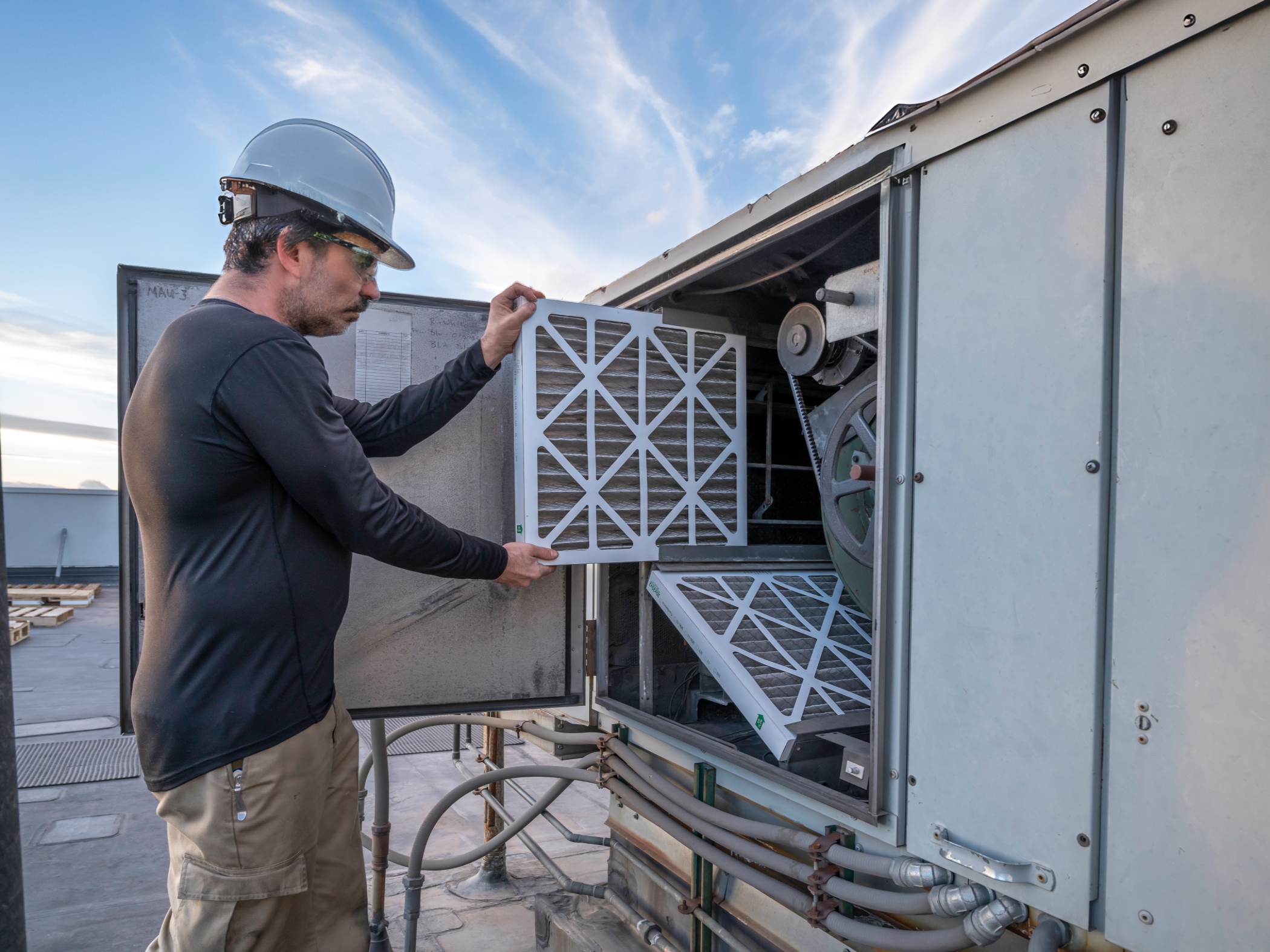Facility Performance: Are Air Filters Overlooked?

Air filters often don't get the attention they deserve. Much more than just another item on the maintenance checklist, filters are critical to maintaining operational efficiency. They're key to ensuring HVAC system performance and safeguarding indoor spaces from airborne contaminants that can threaten occupant health and reduce employee productivity. Air filter choice, quality and maintenance can directly impact your operating costs and the quality of your indoor environment.
Why filters are important
Air filters play a vital role in maintaining indoor air quality, protecting the HVAC system and ensuring energy efficiency. By filtering out contaminants, HVAC filters help prevent respiratory issues and allergies among building occupants, contributing to increased productivity and improved well-being.
In addition to improving air quality, filters protect the HVAC system itself. By trapping debris and preventing it from entering the system, filters help reduce wear and tear on components, minimizing the risk of breakdowns and extending the life of the equipment.
Filters are also critical to overall HVAC system performance. A clean filter allows optimal airflow, ensuring the system operates efficiently without unnecessary strain.
How air filters work
Filters are placed at the entry point of air into the HVAC system, where they capture dust, pollen, mold spores and other airborne particles. The filter captures particles as air flows through it. Depending on the filter's design and material, it can trap a wide range of particle sizes, from large dust particles to microscopic contaminants. There are several types of filters available.
Fiberglass filters are made from layered fiberglass fibers. They provide minimal filtration, capturing larger particles like dust and lint. Fiberglass filters are low-cost and easy to replace but less effective at capturing tiny particles.
Pleated filters are typically made of polyester or cotton. They have a greater surface area, allowing them to capture smaller particles and improve air quality compared to fiberglass filters, but they typically have a higher cost.
High-efficiency particulate air (HEPA) filters capture up to 99.97% of particles as small as 0.3 microns. HEPA filters offer exceptional filtration efficiency, significantly improving indoor air quality. They are often used in hospitals, laboratories and other sensitive environments.
Electrostatic filters use electricity to capture particles, and some models are reusable. They are effective at capturing small particles, including smoke and bacteria. However, electrostatic filters typically have a higher initial cost and require regular cleaning to maintain efficiency (if reusable).
Selecting the right filter
When choosing filters for your facility, here are some important factors to keep in mind.
Air quality. A facility's specific air quality needs dictate the type of filter required. Understanding air quality requirements helps determine the filtration level necessary to meet health and safety standards and protect occupant health. For example, a hospital may require HEPA filters, while an office building may be well served by fiberglass or pleated models.
Efficiency. Filter efficiency is measured by its ability to capture airborne particles. Filters are rated using the minimum efficiency reporting value (MERV) scale, which ranges from 1 to 16 for most commercial filters. A higher MERV rating means better filtration efficiency but may also result in higher resistance to airflow. Balancing filtration efficiency and airflow is key to optimizing performance.
Cost. Budget constraints are significant when selecting filters. Higher-efficiency filters often carry higher initial costs but can offer savings through improved air quality and reduced maintenance needs.
Environmental impact. Each year, millions of single-use filters are discarded in landfills. These filters are typically not biodegradable and can release harmful greenhouse gases and chemicals into the atmosphere. Switching to reusable and washable filters can significantly reduce this waste, but cost and maintenance issues should be considered.
Taking the time to better understand how HVAC filters can impact your facility and choosing the right filters for your needs can positively impact your operating budget, indoor air quality and environmental footprint.
There are hundreds more ways you can save energy at work every day. Check out ElectricIdeas.com/WorkTips for video resources, tips and calculators or easy ways to cut your energy costs and pick a few to work into your routine.
Return to newsletter